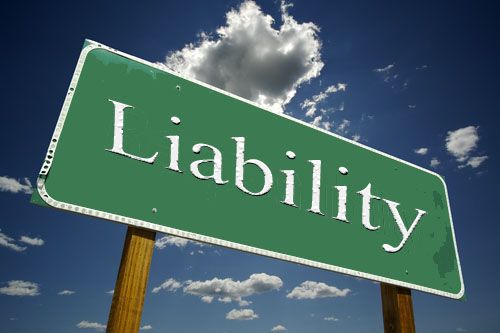The Basics of Commercial General Liability Insurance

Understanding Commercial General Liability
Commercial general liability insurance is the most inclusive liability insurance an organization can purchase. Commercial general liability insurance policies are commonly referred to as CGL policies. CGL policies are the policies most organizations use to anchor their liability insurance program.
There are two forms of CGL coverage, an occurrence-based form and a claims-made form. Occurrence-based forms consider the date of loss to be the date of the incident that causes damage or injury. Claims-made forms consider the date of loss to be the date the claim is first made. Occurrence-based forms are far more prevalent that claims-made forms.
Various coverages exist for CGL policies. Most standard policies denote these coverages as Coverages A, B, and C. Coverage A refers to Bodily Injury and Property Damage Liability Coverage. Personal and Advertising Injury Liability Coverage is known as Coverage B. Coverage C refers to Medical Payments Coverage.
Under Coverage A, Bodily Injury is defined as bodily injury, sickness or disease including death. Property Damage is considered to be physical injury to tangible property including loss of use of the property. Tangible property can also sustain damage without physical injury. Loss without physical injury could occur if damage to other property caused loss of use of the property in question. For example, if equipment in a building is rendered useless due to damage away from the premises, loss of business income could occur.
Under Coverage B, Personal and Advertising Injury is injury resulting from certain offenses. These offenses include such claims as false detention, malicious prosecution, slander, libel, and copyright infringement.
Finally, Medical Payments is considered to be a goodwill form of coverage. It is often referred to as no-fault coverage because it will pay medical expenses (usually on an excess basis after all other insurance has paid) up to a limited amount regardless of whether or not the insured has any legal liability in the matter. In other words, if a person were to fall down some steps that were properly constructed and had the appropriate handrails and markings, an insurer can use Medical Payments Coverage as a measure of goodwill particularly if the person fell due to their own clumsiness or inattention.
Every CGL policy has various insuring agreements. These agreements spell out exactly what the policy will insure. One of the most important agreements in addition to paying damages involves the insurer's duty to defend. Often times, claims that go into litigation cost more to defend than they do to settle. Although it sometimes make sense to settle a claim for economic reasons, it also sometimes make sense to win in the courtroom so that an organization does not get the reputation of being an easy mark. Because of this, the duty to defend is an extremely important part of the promises made by an insurer.
While insurance policies are designed to protect insureds, there are some situations CGL policies do not cover. The policy exclusions address those situations and typical exclusions include such things as losses involving expected or intended injury, contractual liability, employer's liability, war, breach of contract, and pollution to name a few. Exclusions are intended to remove coverage for losses for which it is impossible to underwrite such as war. Some exclusions exist because what they exclude is covered under another type of policy or endorsement. An example of this would be the exclusion dealing with Aircraft, Auto, or Watercraft. Separate liability policies exist for these exposures.
Although there are exclusions, the policy also contains exceptions to the exclusions. These exceptions give back a limited amount of coverage previously taken away by exclusions. These exceptions are known as Fire Legal Liability and Rented Premises Liability. Fire Legal Liability provides coverage for fire damage to premises rented to or temporarily occupied by the named insured with the permission of the owner. Rented Premises Liability covers damage to a rented premise for causes of loss other than fire as long as the cause of loss is not otherwise excluded.
Another important feature of the CGL is the Supplementary Payments section. The section outlines costs the insurer will pay in addition to the limits of insurance. Some examples of Supplementary Payments include defense counsel expenses, reasonable costs of the insured incurred while assisting the insurer with an investigation, prejudgment interest, and postjudgment interest.
Understanding the financial limits of the CGL is important in addition to understanding what it covers. An each occurrence limit represents the most an insurer will pay for any one occurrence for Bodily Injury, Property Damage or Medical Payments. There is also a limit that applies to Personal and Advertising Injury. A separate limit exists for damage to premises rented and the Medical Expense limit caps the amount an insurer will pay to any one person under Coverage C. If an insured had an occurrence limit of $1,000,000 and a jury awarded a plaintiff $1,200,000, then $200,000 of the award would not be covered.
Two other limits are known as the general aggregate limit and the products-completed operations aggregate limit. The general aggregate limit represents the most an insurer will pay during the policy period for Coverage A, Coverage B and Coverage C except for those that stem from the products-completed operations hazard. A separate limit, the products-completed operations aggregate limit is the most an insurer will pay for damage arising out of the products-completed operations hazard during a policy period. If an insured were to have a general aggregate limit of $2,000,000 and submitted claims worth $2,300,000 in the policy period, $300,000 of losses would not be covered.
Endorsements are another important feature of the CGL. Endorsements modify the coverage of the CGL to meet the needs of the insured, allay the concerns of underwriters, or both. Endorsements can designate deductibles, add coverages, and provide for additional insureds. There are also exclusion endorsements that can exclude coverage for concerns such as nuclear energy liability or employment-related practices. Endorsements can also classify insureds or amend the limits of the policy.
In conclusion, the Commercial General Liability policy attempts to cover many of the liability concerns related to the insured's organization. While the CGL is not an all-inclusive liability policy, it does provide the broadest coverage of any liability policy available to businesses and other organizations. Endorsements allow for a level of customization to better suit the needs of the insured. For these reasons, the CGL is a foundational building block for any commercial liability insurance program.








